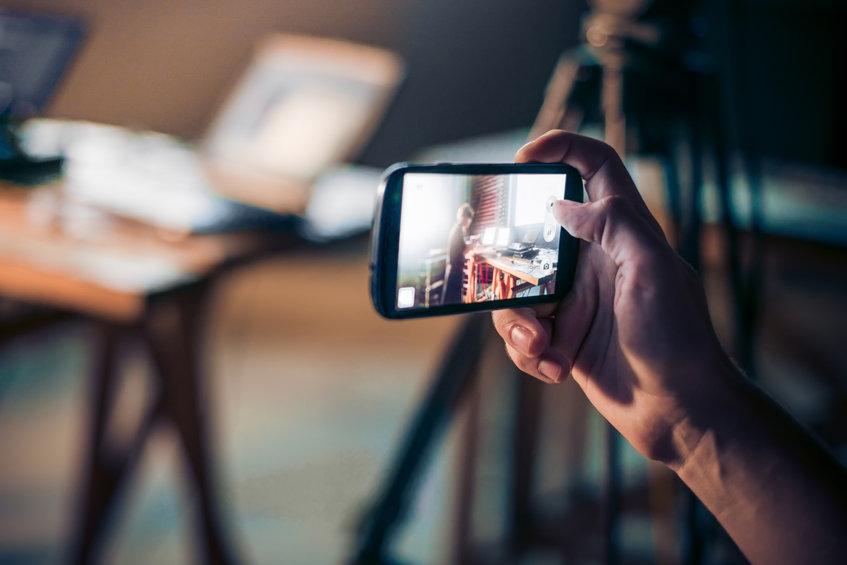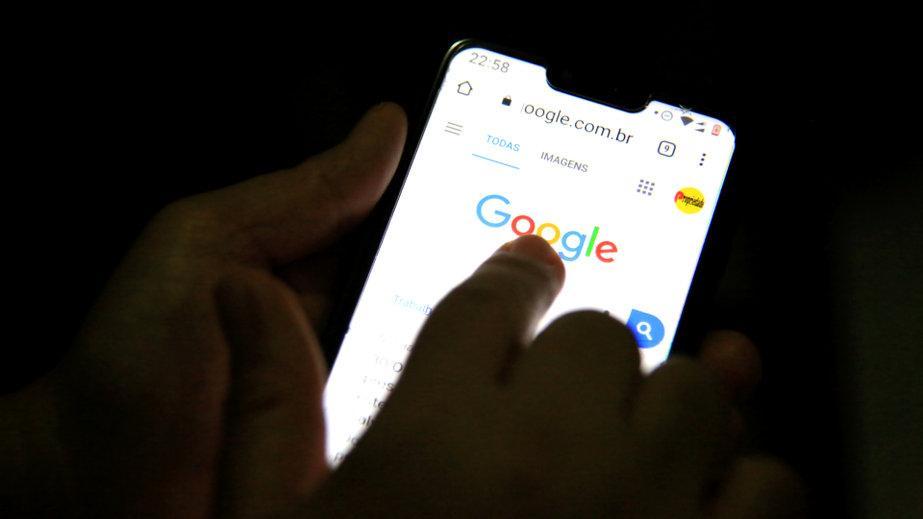Alles über Bilder SEO, Visual Search & Google Lens
- Image SEO aims to rank well with an image file.
- Image SEO is of great value as part of a holistic SEO strategy.
- Another goal of image SEO is to increase the visibility of a website.
- Visual search is becoming increasingly popular through Google Lens and augmented reality.
- Google's algorithm takes into account various factors such as keywords, alt text, image context, image content, etc. when searching for images for a search query.
In this article we cover the following topics:
There are various elements that make up a website. Some of them are visible to the user, while others, like the source code, often remain invisible. Next to text, images are the most important components of a website's content.
While the goal of traditional search engine optimisation is to optimise the URLs of a website, image SEO aims to rank well with an image file. Image SEO is of great value as part of a holistic and thus comprehensive SEO programme.

In search engine optimisation, image SEO is the part of on-page optimisation that mainly relates to image files. In practice, this is often simply referred to as image optimisation. Besides a better position in the Google image search, the goal of image SEO is to increase the visibility of a website. Normally, images are optimised primarily for Google's image search, since the search engine corporation has the largest image database in the world and lists an estimated 10 billion images. Image SEO takes into account all elements, from the file name to the file size and the contextual environment on the web page to the position of the image on the website.
Visual search is becoming more popular with the introduction of Google Lens and the advent of augmented reality. With visual search, we can find what we are looking for by simply taking photos or scanning an image and uploading it.
The evolution of classic Google Image Search
Google Image Search is an online tool that allows users to find images based on a keyword or set of keywords. In the early days, Google Image Search was only used to find relevant images and was not directly synonymous with a search engine. However, the further development of the Google search engine led to the development of Google Image Search. The company's goal was to create an index of all websites in order to provide users with accurate and relevant results when searching for images.
The first version of Google Image Search was launched in 2001 and had limited functionality that allowed users to upload up to 20 images at a time for analysis. At that time, however, Image Search had no search function for keywords or images.
What triggered this image search development?
In 2001, a photo of Jennifer Lopez in a green chiffon dress at the Grammys sparked the development of Google's classic image search. Shortly after the photo was posted, the dress was searched for millions of times on Google. It remains one of the most popular searches of all time and was the starting point for the development of Google Image Search.
Google Image Search is context-based. To identify the content of the image, the Google bot analyses the "environment" of the image to determine its relevance to the search query. By environment is meant the web page text surrounding the image, the content of the alt attribute associated with the image, the title and the file name of the image. Therefore, providing this information is an important part of image SEO. This information is crucial for Google and other search engines to understand with high accuracy what the image represents.
When was the new Google Image Search introduced in Germany?
Since the image search had enormous potential, there were soon many updates and optimisations. Probably the most important change was the introduction of the "new" image search. When users clicked on an image in the search results, they were taken directly to a website. This enabled website operators to use clever image SEO to tap into the traffic on websites that use images and thus increase their ranking in the SERPs. In 2017, the new Google Image Search was finally also introduced in Germany, as one of the last countries in the world. This update was followed by others in the following years that made Google Image Search more and more accurate.
What consequences did the Google updates have for image SEO?
While image SEO was initially still a niche topic, it has become increasingly complex over time due to the numerous Google updates and algorithm adjustments. There are now a multitude of ways to optimise your images.
All image data, such as alt tag, image title as well as the name of the file, must be related to the content of the URL. For page operators, it is best to optimise the image in the visible area. Google increasingly weights the position of the image on the original page. For users who are interested in the image, it should therefore be immediately visible when clicking on the page.
The relevance of an article can have a short-term influence on the positioning of the associated image in the image SERPs. However, it is better to use so-called evergreen content or to update the content continuously. This also has a positive effect on the rankings of your images!
How does Google find the images and which factors are significant?
Google is the most popular search engine in the world and is used by billions of people every day. The image search is a very popular Google function. It has a huge database with billions of images from all over the world. When you type something into Google, you will get different results depending on what you typed and how exactly you searched for it.
Google's algorithm takes into account various factors such as keywords, image context, image content and more when searching for images for a query. Keywords are search terms that help users find results from Google. Images that match the keywords in a search query will appear higher up on the image search results page. Keywords can be words or combinations of words, so you can use them specifically to find images by subject, title and location.

What is Visual Search and how does it differ from classic image search?
Visual search and classic image search can be clearly distinguished from each other. While image search makes text-based queries to deliver images to the user, visual search works as follows: Instead of using text for the query, images can be used. Moreover, users can not only search for graphics, but also search with them. Visual search differs from traditional image search by using computer vision and machine learning to automatically identify objects in images or videos. People can search for images or videos by uploading a photo and entering keywords that describe what is in the image.
How do I Google Search with an image?
If you want to search for content with a specific image, open Google. At the top right of your screen you will see the word "images". Click on it. A search bar appears with a camera icon on the right. Press on the icon. Now you can decide whether you want to continue your search with a picture or a picture URL. You can either upload a photo or insert a URL to start your search. Google Lens is also a new visual search option.
What is Google Lens?
Google Lens is a free feature from Google that allows you to analyse photos on your phone and search directly for their content. Google Lens has been available on Android devices for some time, but recently the feature became available directly in Google Photos and in the Google app.
How can I activate Google Lens?
To use Google Lens on your smartphone, you must have installed the Google Search app or Google Photos. Both apps must be up to date for you to be able to use Google Lens successfully. When you open one of the two apps, you can click on the colourful, square Google Lens icon to use this function. This will open your camera and you can use the image recognition function of Google Lens for your search.
What is Google Lens capable of?
Google Lens is a new way to interact with the world around you and search for specific objects:
-
Identify animals and plants: With Google Lens you can get information about plants, animals or objects nearby
-
Translate text: Google Lens can translate text into all languages supported by Google Translate
-
Scan text: Google Lens recognises handwritten text and other content and can scan, digitalise and save it
-
Discover the surrounding area: With Google Lens, you can scan products or places, landmarks and restaurants and get lots of concrete information.
-
Scan codes: With Google Lens, you can scan QR codes and barcodes quickly and easily.
-
Calculator: With Google Lens, mathematical calculations can be scanned to obtain a result
-
Shopping: Google Lens is the perfect online shopping assistant. Scan a pair of your favourite shoes and get similar results

Image SEO for Google Lens: optimisation purpose
Now image SEO is no longer a new concept, but it is playing an increasingly important role in the online marketing world - especially with the advent of visual search around Google Lens. Because here you can not only place yourself in the traditional image SEPRs, but have another important traffic channel that should not be left unused! Especially in e-commerce, but also in other industries, image SEO and visual search optimisation is essential to attract potential customers and turn them into regular customers. The goal is to publish appealing and optimised images to rank higher on search engine results pages (SERPs). If you want to optimise your images for SEO purposes, you should also make sure that they are optimised for mobile devices. This is because most people today access the internet via their smartphones and no longer via desktop computers.
If you want to use image SEO for your Google Lens, consider the following 10 points:
Include the focus keyword in the file name & alt tag of the image
Place the focus keyword in the caption too
Make sure that the image fits the context of the content of the URL
Use appealing and high-resolution images, this is especially important in e-commerce
Only use mobile-optimised images, Google Lens is currently only designed for smartphones, so only mobile-optimised images should be used here
Make sure you compress your images as much as possible without loss, this will affect the loading speed
Use structured data, JSON-LD & Schema.org for your images so that Google can process them more easily
Create a separate image sitemap that you also submit via Google Search Console
Regularly check which backlinks link to your image URLs, because images can also receive backlinks (both positive and negative)
Internal links and the corresponding link texts to the image URLs are also important, so always use the focus keyword of the respective image in the anchor texts of the internal links
- opaidetheo/123rf.com
- gregorylee/123rf.com
- ipheung/123rf.com
About the author: Louisa Anger

Louisa specialises in writing search engine optimised texts and articles in the online marketing field. She researches and writes SEO-optimised content for various companies from different industries. At SEO-Suchhund, Louisa is the person responsible for the topic of SEO content.
